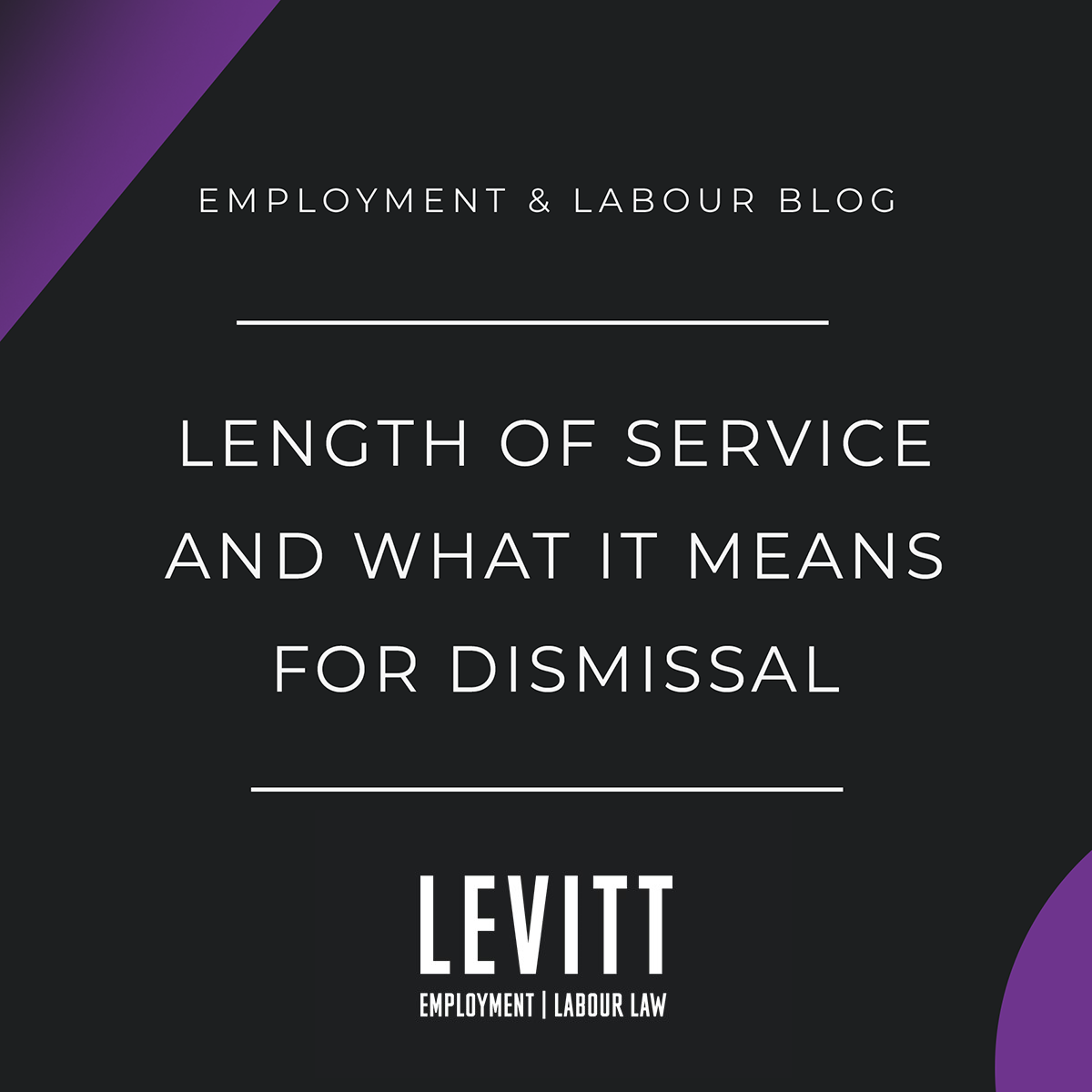When an employee is wrongfully dismissed, the next step is to figure out how much reasonable notice or pay in lieu of notice the employee is entitled to.
The leading case in determining what constitutes reasonable notice of termination is Bardal v. Globe & Mail Ltd. (1960). This case indicates that although there is “no catalogue laid down as to what is reasonable notice in particular classes of cases” there are various factors to weigh.
Particularly, reasonable notice can be decided based on the character of the employment, the length of service, the age of the employee and the availability of similar employment, having regard to the experience, training, and the qualifications of the employee.
Very generally, an employee’s length of service with the employer will increase the amount of reasonable notice required. A Court will account for the fact that the employee has devoted their entire career to a company as Canadian case law attaches great significance to what is termed the “long and loyal service factor” (Cronk v. Canadian General Insurance Co., 1995).
The factor of length of service is not a standalone consideration and must be compared to the other Bardal factors. For example; an employee may have been working with a specific employer for over a decade, which may raise reasonable notice, but this factor will also be compared to the position (e.g. junior, senior, or managerial role) and the individual’s age (which allures to the reality of younger people being able to attract new employment opportunities easier than those who are older).
Determining how much reasonable notice you are entitled to is not an easy task. If you believe you have been wrongfully terminated and are looking to see how much reasonable notice you are entitled to, please give us a call.
What happens if there is a break in my length of service?
There may be a situation where an employee takes a break from their former employer and decides to come back later in their life. The break may be a few months or a few years. When that individual is dismissed the issue becomes how long were they truly with the company in order to determine reasonable notice.
It is common ground that an employer may in certain circumstances be found to have explicitly recognize that a returning employee is to be treated as having maintained continuous employment (Beach v. IKON Office Solutions Inc., 1999). This will depend on how the employee was treated once he or she returned to their original employer. For example, if an employee were given a “long service recognition award”, it would show the employer’s intention to regard their whole length of service. This intention may also be displayed in vacation hours being linked to previous employment length or how the employer holds out the employee to others. Additionally, a break in length of service has also been ignored when an employee leaves for family reasons and not for another job (Brien v. Niagara Motors Ltd., 2009).
If you have previously taken a leave from your employer and you are concerned about what your length of service may be for determining reasonable notice, give us a call.

